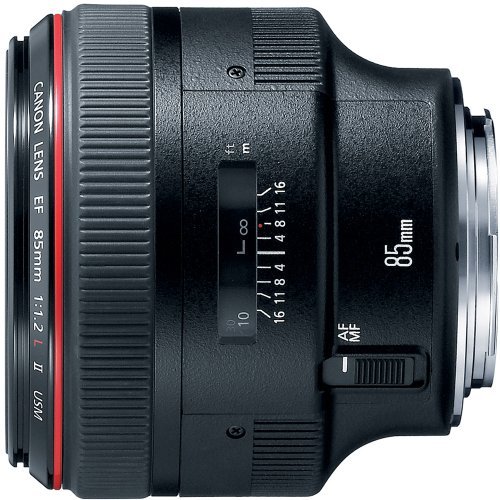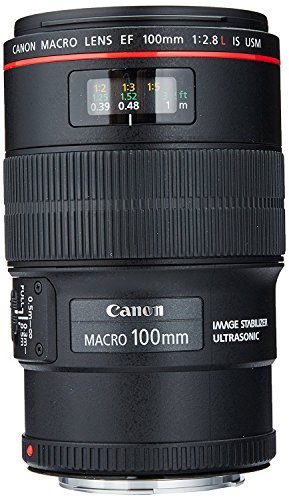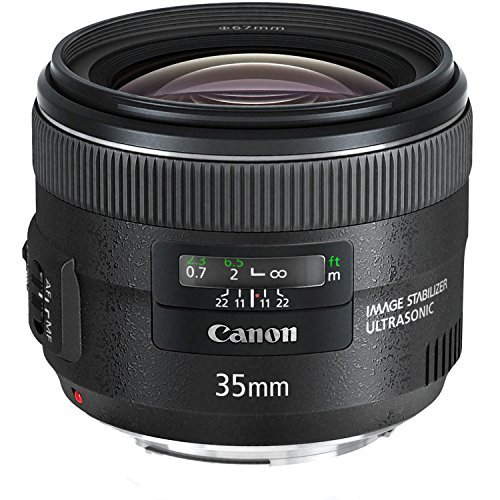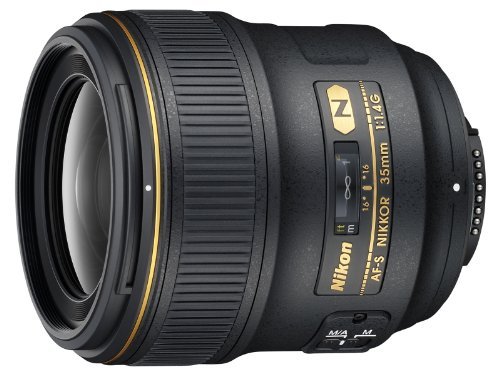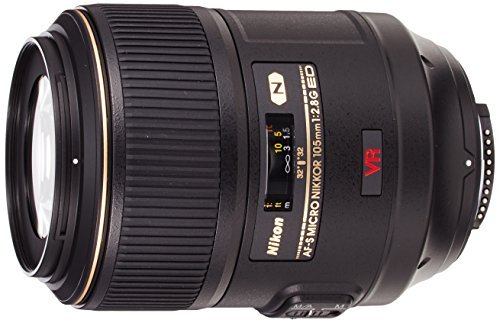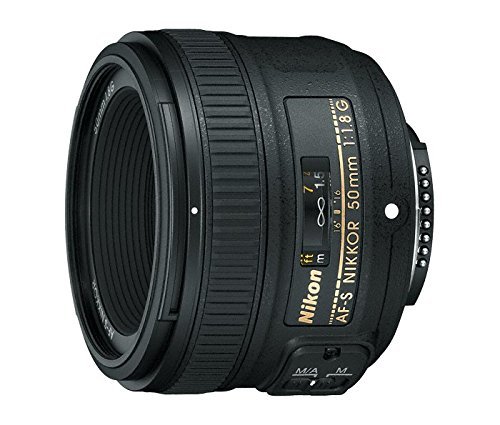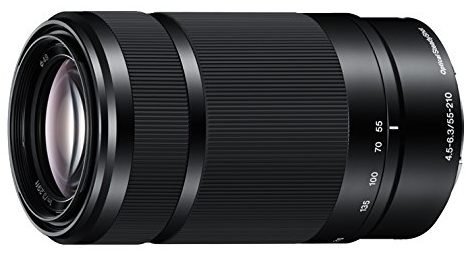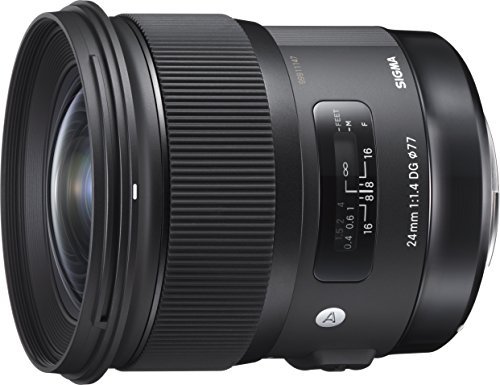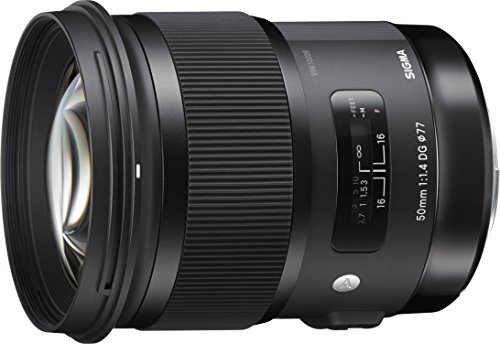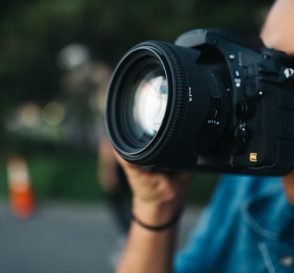In this article, we have reviewed the 10 best lenses for newborn photography including Canon, Nikon, Sigma, and Sony lenses along with a comparison table and a detailed buyer’s guide to help you choose the best lens possible.
“Cutie”, and “So Cute” – are some common expressions that one emits while seeing a photograph of any newborn baby. And no doubt, babies are sky-high cute that every individual thinks of capturing their photos.
Even many people opt for this activity as their profession and earn some really good bucks. So if you’re also dreaming to choose this career option, then you will be requiring a camera lens to make it true. So if you’re interested in knowing more about Best Lens For Newborn Photography, then stay connected with us.
No doubt, photography is an art and one of the most fascinating professions for all the people out there. But in order to become a perfect photographer, you must be filled with all the useful and necessary photography equipment. One such important piece of equipment for photography is the camera lens.
This is one of the crucial elements for any photography and you can easily spend your money on this. Any camera with the best lens is capable of taking high-quality and beautiful pictures. That’s why you must be smart and very well aware-while buying a new camera lens.
Here in this article, we’ll be looking at the 10 Best Lens For Newborn Photography and will also provide an individual review for all of them. So without making any more delay, let us get started.
Best Lens For Newborn Photography:
Best Canon Lens for Newborn Photography:
1.) Canon EF 50mm f/1.2 L USM Lens
This Canon EF 50mm f/1.2 L USM is one of the best camera lenses for all types of photography. The moment you’ll unbox the package, the lens will appear to be heavy and surprisingly quite durable as well.
It is one of the best choices for all portrait photographers as it has the ability to shoot wide open at the f/1.2 aperture.
The design and the build quality of the lens optics are also impressive. Even in the rough weather, the lens appeared to be sturdy and also produced high-quality images. The mount of the lens is made with a thin rubber gasket that prevents moisture to get inside the camera.
It comes with a ring-type Ultrasonic Motor (USM) and high-speed CPU that allows you to focus silently and very quickly as well. This lens comes with 8 circular-shaped aperture blades and has a 72 mm filter size. Also, it has a minimal focal distance of 0.45m which provides a maximum object magnification of 1:6.7.
The lens has a maximum aperture of f/1.2 and a minimum aperture of f/16. Also, this lens supports a 46° of Angle of View.
There’s also a coating of Super Spectra that reduces flare and ghosting but also enhances color accuracy and contrast in different lighting conditions. The 50 mm focal length lens is the most flexible and is a must element for different types of photographers.
Looking at specifications, this lens weighs 1.28 pounds and comes with dimensions of 2.6 x 3.4 x 3.4 inches.
- It produces a very well bokeh effect.
- Even in poor lighting conditions, the performance of the lens is very good.
- The design is compact and produces sharp images of up to 1.2.
- The autofocus feature should work faster.
2.) Canon EF 85mm f1.2L II USM Lens
This Canon EF 85mm f1.2L II USM is one of the best lenses for newborn photography. It is a huge aspherical lens that provides high image quality, even with f/1.2. Canon lenses use Electronic Focus (EF) which means the focus is done with a motor inside the lens. Here with this model, Ultrasonic Motor (USM) does the job silently.
The construction of the lens uses 8 elements in 7 groups. The focal length of the lens is 85 mm. When used with a 1.3x camera, it will give an angle similar to that of a 107mm lens on a 35mm film camera. Whereas a 1.6x camera would give an angle of view similar to that of a 138 mm lens on a 35mm film camera.
The lens would provide you with 28 degrees (30 feet) of the angle of view which is a good spec. Apart from this, it has 3.2 feet of closest focusing distance and a filter of size 72mm. It has a focus adjustment feature where you can autofocus with a full-time manual. It has a maximum aperture of 1.2 and a minimum of 16.
This 85mm f1.2 is not known for its focus speed, but it produces a good depth effect in pictures. So for all those people who want to add better portrait effects to the images, this Canon EF 85mm f1.2L II USM is a great to have option.
Talking about specifications, this lens weighs 2.26 pounds and measures dimensions of 3.3 x 3.6 x 3.6 inches. Although, this is a great option for the interested buyers of Canon.
- The lens is very well made.
- It produces sharp and contrasty images even in corners and on full frames.
- Also, it produces an exclusive bokeh effect.
- Some users may find the lens quite heavy and bulky.
3.) Canon EF 100mm f/2.8L IS USM Macro Lens
In the year 2009, Canon released a new version of its 100mm f/2.8 macro lens, known as Canon EF 100mm f/2.8L IS USM. One thing that was a big addition to this lens is Hybrid Optical Image Stabilization. This uses a vibration gyro and acceleration sensor that compensates for up to 4 stops of both angular and shift movements.
Due to this, the usability gets enhanced while shooting hand-held. Talking about build quality, Canon EF 100mm is made with a metal mount, plastic barrel, and also a rubber-coated focus ring.
Don’t worry about the plastic barrel as the lens feels quite robust and sturdy. You’ll not believe but the lens is very well designed and it feels very much lighter.
Moreover, the lens is weather-sealed which means you can use it even in bad weather conditions without any issue. Thanks to its rubberized focus ring, the handling becomes smooth and it gets easier to use. The lens construction consists of 15 elements in 12 groups and has 100 mm of focal length with an aperture range of 1:2.8.
The lens uses an inner focusing system that doesn’t extend while focusing on objects. When the lens is focusing, no other elements move or rotate, thereby, a polarizing filter can be used easily.
Canon EF 100mm makes use of USM (internal focusing motor) due to which autofocusing becomes very quick and quieter. Canon has provided three focus distance limiter options 0.3m to 0.5m, 0.5 to infinity, and 0.5 to full, use of any one of them will enhance the focus speed of the lens.
Looking into specs, this lens weighs 1.38 pounds and measures 4.8 x 3.1 x 3.1 inches.
- The blurred background looks great in the picture.
- It gives sharp shots with an open aperture.
- The autofocus feature works well and quickly as well.
- You’ll find angled highlights appearing on the covered aperture.
4.) Canon EF 35mm f/2 IS USM Wide-Angle Lens
By the end of 2012, Canon redesigned the 35mm ƒ/2 and completely changed its design, and added new features. Also, image stabilization was one of the most popular additions to this camera lens. Canon EF 35mm f/2 is an EF-series lens that was made to fit full-frame cameras.
However, they are also compatible with the APS-H and APS-C Canon cameras. For APS-H camera bodies, the lens performed like a 45mm lens whereas, for the APS-H sensor, it functioned like a 56mm lens. This Canon EF 35mm f/2 also makes use of an Ultrasonic Motor (USM), meaning it would have a silent and quick autofocus feature.
It also means that you can get a big focus ring for instant manual focus override anytime. The lens optics construction has 10 elements in 8 groups, out of which one is an aspherical element. All 35 mm cameras (or full-frame cameras), it has an angle of view equal to 63º diagonal, 38º vertical, and 54º horizontal.
This Canon EF 35mm controls (reduces) the chromatic aberrations and remains constant across the different apertures. When it comes to macro work, the performance of the lens is very well with 0.24 magnification and 24 cm of minimum close-focusing distance.
The overall design of the lens is just perfect, you just need to use your thumb for AF – MF switch. This Canon EF 35mm has a maximum aperture of 2 and a minimum aperture of 22.
Also, it has a photo filter thread size of 67 millimeters. Looking at specifications, this lens weighs 11.8 ounces and comes with dimensions of 2.5 x 3.1 x 3.1 inches. Although, another great choice for all the interested buyers looking for the best lens for newborn photography.
- It has nominal distortion and is optically stabilized.
- It has small dimensions, so not a bulky and heavy lens.
- It clicks sharp and crisp images.
- It does not include any hood.
- You’ll get dim or dull corners at a wide aperture.
Best Nikon Lens for Newborn Photography:
1.) Nikon AF FX NIKKOR 35mm f/1.4G Fixed Focal Length Lens
The next best lens for newborn photography is the Nikon AF FX NIKKOR 35mm f/1.4G. For all those photography enthusiasts who are in search of a large aperture lens of f/1.4 and a fixed wide-angle lens, this NIKKOR 35mm is a professional-grade lens.
You can easily click pictures in low-light conditions and create shallow depth effects to separate objects from the background.
This is possible only because of the large aperture of the lens. This lens is built with the latest optical technology for both FX and DX sensors. Due to this, it produces outstanding clarity and contrast while clicking pictures.
When compared with Nikon 24mm f/1.4G, this Nikon 35mm f/1.4G is a newer release but both lenses have almost similar characteristics. From the exterior view, both the lens are identical while Nikon 35mm f/1.4G comes with a more simple optical design than the other.
This lens is integrated with AF-S silent-wave focus motor and Rear Focus which is used to banish the front barrel rotation and also change of length of the lens. It also has a Super Integrated Coating (SIC) and Nanocrystal coating that enhances the optical formula and also reduces ghosting and flares.
The quality of the lens is very appreciable and it is capable to work even in bad weather conditions and dusty environments. The 9-blade diaphragm gives a more natural view of the out-of-focus objects.
Apart from this, the Silent Wave Motor (SWM) autofocuses the objects with accurate, quiet, and quick operation. Looking at specifications, this lens weighs 1. 2 pounds and comes with dimensions of 3.5 x 3.3 x 3.3 inches.
- The working of autofocus is fast and quick.
- The bokeh effect is very well prepared while taking images.
- You can even use the lens while shooting in bad weather conditions.
- It has chromatic aberrations on the open aperture.
- Does not click very sharp images.
2.) Nikon AF-S VR Micro-NIKKOR 105mm f/2.8G IF-ED Lens
Most professional photographers say that the macro lens is best for newborn baby photography. And we’re here with one such camera lens “Nikon Micro-NIKKOR 105mm f/2.8G”.
This lens is to be Nikon’s flagship macro lens, and in fact, it is the first macro lens that comes with image stabilization by any brand. You’ll be able to use this lens with both full-frame FX and cropped-frame DX-format bodies as well. And being an AF-S model, users will be able to use the autofocus feature with any Nikon DSLR.
With the FX body, the 105mm focal length can get doubled for portrait duties. Whereas the DX body, it provides longer reach to distant and smaller objects. The lens construction has 14 elements in 12 groups, this includes one ED-element and nano-coating.
This complex design of the lens produces lower contrast and also increases the risk of flares and ghosting.
Due to this, nano-coating is a great element of this optical formula. The lens has a magnification of 1:1 and the closest focus distance of 0.31m. The autofocus feature makes use of SWM(Silent Wave Motor) which works with every Nikon camera and is used to focus accurately and silently.
Even in low light situations, its fast f/2.8 aperture is capable of clicking stunning pictures. It is the shortest prime lens for FX bodies that comes with image stabilization.
Moreover, VR (Vibration Reduction) by Nikon stabilizes the lens movement caused by the handshake. Overall, the performance of the lens is impressive and will provide everything you needed with this focal length.
Looking into specs, the lens weighs 1.74 pounds and comes with dimensions of 4.6 x 3.3 x 3.3 inches.
- It has a very high resolution.
- For a macro lens, it has a faster autofocus feature.
- It has glare protection available that works very well.
- The maximum aperture is a floating value.
3.) Nikon AF-S FX NIKKOR 50mm f/1.8G Lens
For all those enthusiastic photographers who were looking for affordable quality optics of fixed portrait lenses, this Nikon AF-S FX NIKKOR 50mm is one of the great choices for them. It has a large f1. 8G aperture which is great for capturing stunning images in low lighting conditions.
Apart from this, it prepares a very well bokeh effect(separating objects from the background). This Nikon AF-S FX NIKKOR 50mm has an optical design of 7 optical elements in 6 groups. Out of these, one is an aspherical element that is used for reducing coma and chromatic aberrations.
In fact, this lens is known to be the first Nikon 50mm lens that comes with an aspherical element. Because of its larger lens barrel, the front element of the lens doesn’t rotate or extend while autofocusing. This makes the lens more durable and allows you to use filter holders.
Along with this, the lens utilizes a silent wave motor (AF-S) whose job is to provide a silent focus operation.
Also, the AF-S motor makes it capable to use autofocus with a manual focus override which is not possible with AF-D lenses. Nikon AF-S FX NIKKOR 50mm comes with Super Integrated Coating which helps in the reduction of flares and ghosting.
This also increases light transmission efficiency and provides better color consistency. The lens uses a 7-blade diaphragm which provides you heptagon-shaped bokeh with a large aperture (above f/2).
With this lens, you’ll get a maximum aperture of f/1.8 and a minimum aperture of f/16.
The focal length of the lens is 50 mm and has a minimum focus distance of 0.45 m. Talking about specifications, this lens weighs 6.6 ounces and measures 2.1 x 2.8 x 2.8 inches. Overall, a great affordable option for all photography lovers.
- It has a really wide aperture range.
- It has minimum distortion.
- It is affordable and clicks very sharp images.
- It does not have optical stabilization.
- You’ll be not satisfied with its close-focus capability.
Best Sony & Sigma Lenses for Newborn Photography:
1.) Sony E 55-210mm F4.5-6.3 Lens
This Sony E 55-210mm F4.5-6.3 is the first and only Sony lens that offers telephoto zoom for their crop-sensor camera bodies (APS-C). It is said that this lens is designed more for photo lovers rather than professionals.
But still, you’ll find this lens in most professional photographers’ kit bags. The biggest plus for this Sony E 55-210mm is its zooming capacity. Actually, this lens will allow you to capture faraway distant objects clearly. It will also provide you a minimum aperture of f/22-32, and a maximum aperture of f/4.5-6.3.
The overall design of the lens is quite lightweight and can be easily fit into your pocket. But when used with a Sony APS-C mirrorless body, you might fill a little heavier but is still comfortable. This lens makes use of Optical Steady Shot (OSS) which means the sharpness of the image will be improved and enhanced while clicking handheld images.
Another important note for the buyers is that this lens comes with a lens hood, and front & end caps. Talking about build quality, this lens is not a master here but the entire body is a metal made except for the focus and zoom rings.
Focus and zoom rings are made of plastic but that worked well for us. The lens would accept 49 mm of photo filter thread. The bokeh effect of the lens will not impress professional photographers as it does not produce attractive bokeh.
But for a novice photographer, it would be okay.
Looking over the specs, this lens would weigh 13.76 oz and measures 4.2 x 2.5 x 2.5 inches. Overall, a good option for photography lovers.
- It is optically stabilized and has a solid telephoto reach.
- It has a large 3.8x zoom range.
- The weight and dimensions of the lens are very small, so not a bulky product.
- It doesn’t come with any dust or water protection.
2.) Sigma 24mm f/1.4 DG HSM Art Lens for Nikon
This Sigma 24mm f/1.4 DG HSM Art Lens is our next pick which was announced in February 2015. This lens put up a big challenge for brands like Canon and Nikon by providing a professional-grade wide-angle lens at such a low cost.
The company goes stronger by its 24mm f/1.4 Art lens which has some amazing sharpness characteristics at wide apertures, which was not so convincing with other leading lenses. The optical formula of the lens comprises 15 elements in 11 groups, out of which 4 are for low dispersion, 3 are low-dispersion (FLD), and the remaining two are of an aspherical type.
Because of this, the lens has got some weight and is even bigger in size. However, if you’re interested in buying a smaller and lighter 24mm lens, then Nikon 24mm f/1.8G would be a good choice. Since it has the ability to click photos at such large apertures, it creates a very well bokeh effect.
This lens utilizes HSM (Hyper-Sonic Motor) which provides fast and quiet autofocus to the users. This lens is made of FLD and SLD glass elements that are responsible for reducing distortion and chromatic aberration.
Also, it has 9 blades diaphragm that prepares a nice out-of-focus effect. The focal length of the lens is 24mm and this provides an aperture range of f/1.4 to f/16. For DX-format, it has a maximum angle of view of 61° whereas, for FX-format, it has that of 84°.
Looking over the specifications, the lens weighs 1 pound and measures 3.1 x 3.3 x 3.3 inches.
- The design of the lens is very good and also good quality pictures.
- It also has an impressive wide-aperture sharpness.
- Build with FLD and SLD glass elements that reduce distortion and chromatic aberration.
- As compared with other Sigma models, it has more ghost sensitivity.
3.) Sigma 50mm F1.4 Art DG HSM Lens for Canon
For all those users who’ve been looking for a high-end 50mm lens that offers speedy autofocus and other quality features, this Sigma 50mm F1.4 Art DG HSM will be a perfect pick for them.
The lens clicks some really sharp pictures that can be seen in the entire frame, especially from the corners. This 50 mm lens provides good coverage on a full-frame body and can turn out to be a good choice for simple purposes. When used with APS-C bodies, the lens would be equivalent to 75mm which means it can be used for short telephoto.
And for Canon APS-C cameras, it would be equivalent to an 80mm focal length. The optical construction of the lens owns 13 elements in 8 groups, three of which are special low dispersion elements.
Also, it has 40 cm of closest focus distance and a magnification of 1:5.6. The size of the filter thread is 77mm which is a standard figure for pro lenses. The lens utilizes HSM (hypersonic motor) which means it supports quick and easy autofocus.
This also means that the lens would be working even with those camera bodies that don’t own an AF drive.
Focus accuracy is something very crucial when it comes to clicking sharp images. Sigma F1.4 Art Lens takes around 0.6 sec for focusing subjects from infinity to 50 cm. This tells that the autofocus feature works well with this lens.
Moreover, it has an aperture range from f/1.4 to f/16. Looking at specifications, Sigma F1.4 Art weighs 1.8 pounds and comes with the dimensions of 3.9 x 3.4 x 3.4 inches.
- The wide aperture settings allow for capturing highly sharp images.
- It has high contrast and a low level of the vignette.
- Along with the lens, you’ll get a cover and waist bag.
- The bokeh effect will not impress photographers.
- Some users may find the lens heavy and bulky.
Buying Guide For Best Lens for Newborn Photography:
Before buying a new camera lens for your photography skills, you must be aware of every term, factor, and feature of the same. In fact, not only for the camera lens but for every gadget or device, you must read the buying guide for that specific product before making a final call.
Similarly, we are now going to provide you with a complete buying guide for newborn photography lenses. So if you’re interested in buying a new lens for your photography skills, then this is a must to look segment of the article for you.
Focal Length
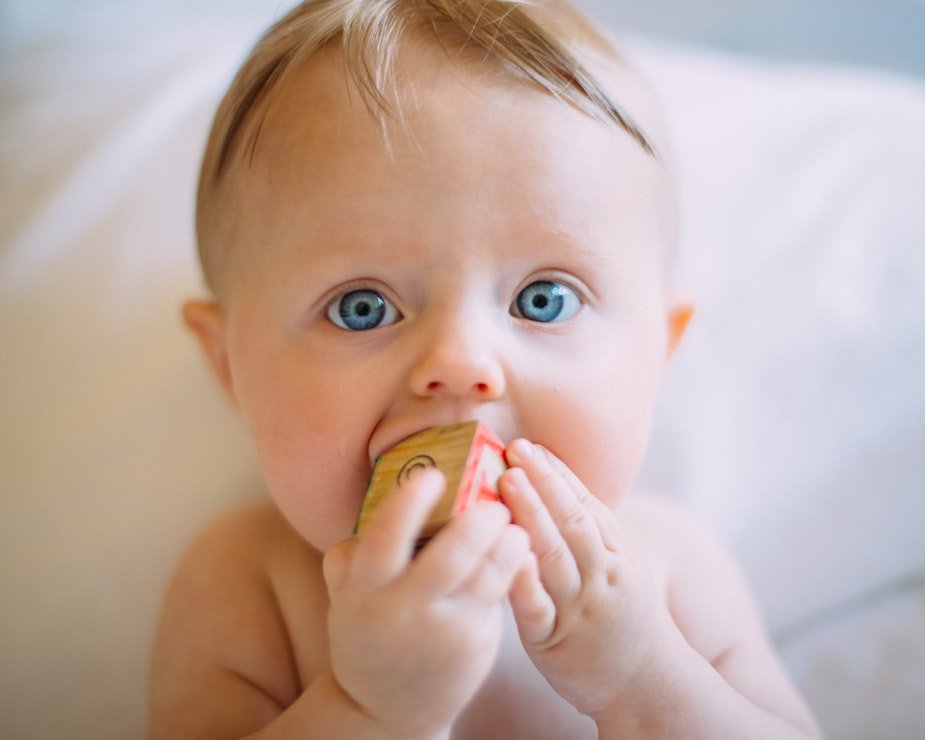
Focal Length is one of the most important parameters that you should consider while buying a new lens. The focal length is the distance between the center of the lens and the sensor when the object is in focus.
The higher the focal length of the lens means the higher the zooming ability of the lens. Basically, focal length decides whether the lens is capable of capturing a wide or narrow angle of view. A lens with a smaller focal length will click more on any scene, whereas a lens with a larger focal length will bring the object closer.
Now, different lenses come with different focal lengths that can be used for different purposes. So initially, it is upon you to know for which purpose you require the lens. We’re providing a list of focal length ranges that are available in the market.
- 14-24mm (Ultra Wide Angle) – The lenses with 14-24 mm of focal length provide such a wide angle of view that it appears distorted. This lens is said to be a special item. It appears distorted as our eyes are not capable of seeing that sort of range. These lenses are not suited for portraits as facial features don’t look natural.
- 24-35mm (Wide Angle) – 24 mm is the point where the distortion of the images stops appearing in the frame. Also, most full-frame cameras use these kit lenses. Photographers use these lenses for documentation as they are capable of clicking wide-angle pictures with a great look.
- 35mm-70mm (Standard lens) – The camera lens with 45 mm or more focal length clicks the picture that our eyes see. We will recommend you look for a 50 mm f1.8 lens which is not only affordable but also gives some great results.
- 70-105mm (Short Telephoto Lens) – Usually, this is the focal length range where kit lenses go on to stop. Until you’re using a telephoto lens range or portrait primes. We recommend these lenses for portraits as they perform really well when it comes to separating the subject from the background.
- 105-300mm (Telephoto Lens) – The lenses offering this range of focal length are generally used for capturing distant objects like mountains, and buildings. You cannot use these lenses for landscapes as they flatter the scene. You can use this lens for animal or sports photography as well.
Aperture
 The aperture is another important factor to consider when buying a new lens. Also, it is one of the most confusing things for any user planning to buy a new lens.
The aperture is another important factor to consider when buying a new lens. Also, it is one of the most confusing things for any user planning to buy a new lens.
The aperture of the lens uses specifications that tell how much light the lens is. will allow. When you’ll look around in search of a camera lens, then you’ll find that aperture can be expressed in various ways: F4, f/4, 1:4.
However, they all share the same specification and have the same meaning. The lower the aperture number a lens has means the wider aperture it has. For example, f/1.4, and f/2 are known to have a low number and wider aperture. This means it’ll be lighter to enter through the lens.
So the only mantra for aperture while buying a new lens is to get the aperture number as low as possible without sacrificing the focal length. For good zooming capability and wide maximum aperture, we would recommend you 24-70mm lens with f/2.8. This lens will load lots of light into the lens and prepare a beautiful portrait effect.
Apart from this, a lens having a higher aperture number is known to capture images at low lighting conditions without glowing the flashlight. A higher aperture lens also creates a good depth effect which is one of the most important aspects of quality photography.
ISO Settings
ISO is one of the important settings for a camera that is used for capturing well-exposed pictures. ISO is a short form for the term International Standards Organization.
Actually, it is an organization that has set some standard ratings for every gadget and product. In the photography sector, the ISO number will let you know how sensitive is the image sensor to the light. The lower the ISO number means the lower the sensitivity of the film. This means the finer the grain in the photo.
On the other hand, the higher ISO means that the camera is more sensitive to the lens which will allow you to click pictures in dark lighting situations. For those scenes where the subject is moving fast and the light is low, you’re supposed to set a higher ISO rating.
At a higher ISO setting, you can use a faster shutter speed to get a stable frame. Digital cameras can be set to ‘Auto Mode’ in which the camera automatically sets the appropriate ISO set as per the conditions.
However, you can even set the ISO settings manually to get the desired results.
Important Terms You Must Know
The following mentioned are some of the terms which you’ll come across throughout the review. So be aware of all the terms to understand your camera lens more deeply.
- MF – MF is an abbreviation used for the term Manual Focus. You’ll find this feature in older lenses or cheaper ones. Don’t be confused as you’ll see the same acronym for every brand.
- Full Frame – The lenses designed for Full frame sensors can be used with crop sensor cameras but you’ve to sacrifice with crop factor. However, with the full-frame camera, it’ll produce larger images.
- Crop Sensor – Lenses with this mark indicate that these lenses are for smaller cameras with smaller sensors. However, the focal length is also maintained accordingly. These lenses will not be working with full-frame cameras. And if you think of doing such, the lens will be producing heavy vignetting.
- SWM (Silent Wave Motor) – Most of the lenses are built with a motor called SWM, which is used for quicker autofocus. Along with being quicker, it makes the focusing process quiet as well. Also, the end of the lens doesn’t rotate or move while focusing on subjects.
- Image Stabilization – According to us, most photography lovers are aware of this term. But if you aren’t then don’t just worry. It means the lens will remain stable while you are clicking pictures at slow shutter speeds. All the cameras with this feature do the same thing with different techniques.
Conclusion
Honestly saying, the camera equipment you use doesn’t define how much success you’ll achieve as Newborn Photography. Actually, it’s the camera or lens, it’s the photographer and the skills.
All and all, we are trying to say that buying the best lens isn’t enough to get the best result. Until you show up your skills and do proper justice with the equipment.
We begin our review by introducing the best lens for Newborn Photography and mentioning its effectiveness and advantages. Later on, we’ve picked some best lenses out of many available in the market.
We’ve reviewed all the items individually and also provided pros and cons for the same. Finally, we’ve prepared a buying guide with complete details for buyers who are new in the industry.
Canon EF 85mm f1.2L II USM is our top priority when it comes to the best lens for newborn photography as it has 85 mm of focal length with an f1.2 aperture. The lens has all those features that are demanding for any newborn photographer. Although, the lens is very well built and is a great choice for buyers.
On the other side, if you’re looking for an affordable lens then we’ve got one for you, called Sigma 50mm F1.4 Art DG HSM. This lens comes with some great offerings and is another perfect choice for all interested buyers.
So we’re done with our job and now it’s upon you to match your needs and choose a perfect lens for your camera.

